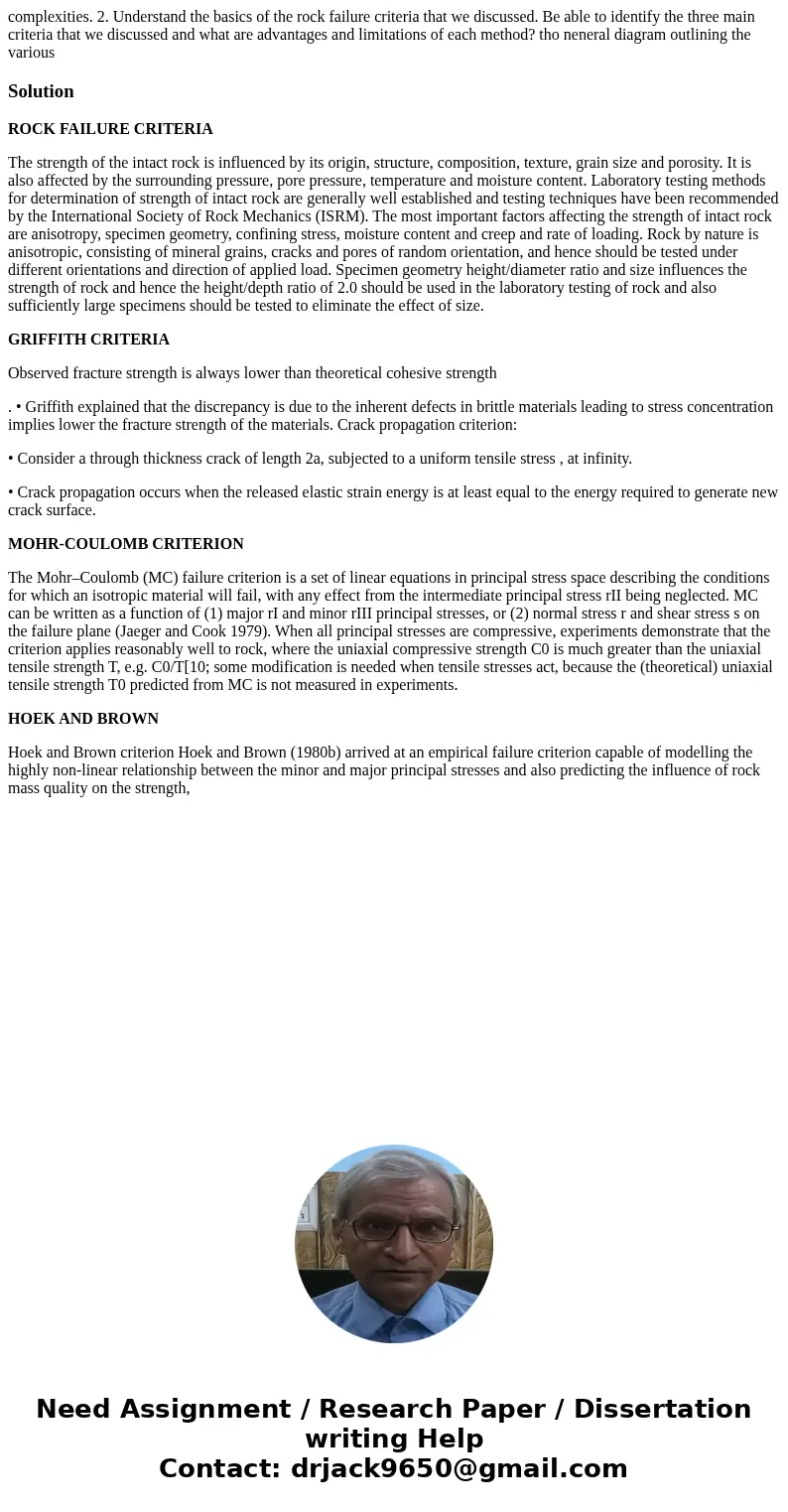complexities 2 Understand the basics of the rock failure cri
Solution
ROCK FAILURE CRITERIA
The strength of the intact rock is influenced by its origin, structure, composition, texture, grain size and porosity. It is also affected by the surrounding pressure, pore pressure, temperature and moisture content. Laboratory testing methods for determination of strength of intact rock are generally well established and testing techniques have been recommended by the International Society of Rock Mechanics (ISRM). The most important factors affecting the strength of intact rock are anisotropy, specimen geometry, confining stress, moisture content and creep and rate of loading. Rock by nature is anisotropic, consisting of mineral grains, cracks and pores of random orientation, and hence should be tested under different orientations and direction of applied load. Specimen geometry height/diameter ratio and size influences the strength of rock and hence the height/depth ratio of 2.0 should be used in the laboratory testing of rock and also sufficiently large specimens should be tested to eliminate the effect of size.
GRIFFITH CRITERIA
Observed fracture strength is always lower than theoretical cohesive strength
. • Griffith explained that the discrepancy is due to the inherent defects in brittle materials leading to stress concentration implies lower the fracture strength of the materials. Crack propagation criterion:
• Consider a through thickness crack of length 2a, subjected to a uniform tensile stress , at infinity.
• Crack propagation occurs when the released elastic strain energy is at least equal to the energy required to generate new crack surface.
MOHR-COULOMB CRITERION
The Mohr–Coulomb (MC) failure criterion is a set of linear equations in principal stress space describing the conditions for which an isotropic material will fail, with any effect from the intermediate principal stress rII being neglected. MC can be written as a function of (1) major rI and minor rIII principal stresses, or (2) normal stress r and shear stress s on the failure plane (Jaeger and Cook 1979). When all principal stresses are compressive, experiments demonstrate that the criterion applies reasonably well to rock, where the uniaxial compressive strength C0 is much greater than the uniaxial tensile strength T, e.g. C0/T[10; some modification is needed when tensile stresses act, because the (theoretical) uniaxial tensile strength T0 predicted from MC is not measured in experiments.
HOEK AND BROWN
Hoek and Brown criterion Hoek and Brown (1980b) arrived at an empirical failure criterion capable of modelling the highly non-linear relationship between the minor and major principal stresses and also predicting the influence of rock mass quality on the strength,

 Homework Sourse
Homework Sourse